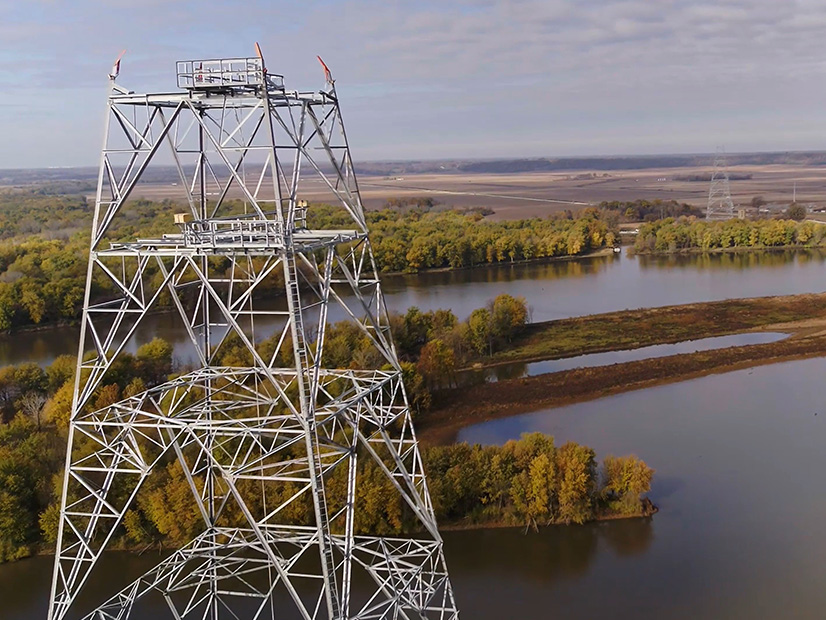FERC last week approved transmission incentives for Missouri River Energy Services’ share of the Big Stone Project in Minnesota and South Dakota.
The wholesale power agency provides power to 61 member municipalities that own and operate their own distribution systems in Iowa, Minnesota, North Dakota and South Dakota. The MISO member is responsible for two segments of the Big Stone Project, which is a Multi-Value Project approved under the grid operator’s 2021 transmission expansion plan.
The first part of the line Missouri River is building is 345 kV and runs about 100 miles from South Dakota into Minnesota along a new right of way, while the second part also is 345 kV, but largely will be built on existing rights-of-way in Minnesota. Both segments involve related upgrades to substations, and the firm is working with Otter Tail Power.
Missouri River expects to spend $285.6 million on its half of the project, which will relieve reliability issues on the 230-kV system and improve connections between 345-kV systems.
The power agency asked for and got hypothetical capital structure, construction work in progress and abandoned plant incentives, plus a 50-50 equity and debt capital structure. To implement those incentives, the firm asked for and got some changes to MISO’s tariff.
The transmission investment is the largest ever made by Missouri River, representing 221% of the $129.5 million of its projected net transmission plan this year and 48% of its long-term debt. Coordinating the line’s permitting with multiple owners also will prove to be more complex.
“We find that Missouri River has demonstrated that the requested incentives are tailored to the risks and challenges faced by the Big Stone Project,” FERC said. “We also find that the approval of the hypothetical capital structure incentive and CWIP incentive will bolster Missouri River’s financial metrics, help ensure maintenance of its current credit rating and enable its participation in the Big Stone Project.”
Missouri River asked for the abandoned plant incentive because the project could fail due to no fault of its own, such as negotiations for construction and operations and maintenance agreements between partners with different business models. It also faces regulatory risks as it crosses two states and will require a federal environmental impact statement.
FERC granted the abandoned plant incentive, agreeing that it will help cut the risk of non-recovery of costs in the event the project is abandoned for reasons outside Missouri River’s control.
Commissioner Mark Christie filed a concurrence, saying that while the project met FERC’s existing requirements for transmission incentives, it was time to examine them generally. Christie has made the same point before on other orders involving transmission incentives.
“As this commission considers other potential reforms related to regional transmission planning and development, it is imperative that incentives like the CWIP incentive, abandoned plant incentive and RTO participation adder are all revisited to ensure that all the costs and risks associated with transmission construction are not unfairly inflicted on consumers while transmission developers and owners stand to gain all the financial reward,” Christie said.



